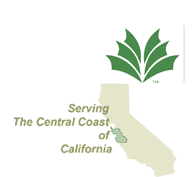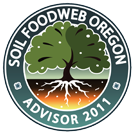Plant Health- Causes of tree decline and remediation options
Compromised Growing Environment-How does this happen?
Construction activity is one of the leading causes of tree mortality. Root reverence and soil compaction commonly occur during landscape projects. Root severence compromises your tree’s ability to bring in resources such as water and nutrients from the soil upward into its branches and leaves. Severed roots can become colonized by disease pathogens. Root severence, in combination with soil compaction, is deadly to trees.
Oftentimes during construction of a home, the topsoil layer is removed and is not replaced. This leaves a very challenging condition that plants are expected to thrive, let alone live in.
Soil compaction eliminates pore space in soil. Pore space is essential for plant health as it allows air and water to exchange. This is also essential for plant health. Ideally, soil will contain 50% pore space. Most plants thrive in aerobic conditions. Soil compaction leads to an anerobic condition. Root rot will occur and plants will die.
Improper pruning practices are quite likely the leading cause of tree decline. Trees do not need to be excessively pruned year after year. In most cases, the flush of growth typically seen afterward is actually an indication of tree stress. There is a critical association between tree roots and tree shoots. Shoots,(leaves) produce carbohydrates and send them downward into the root system. Root exudates are produced during this process. Root exudates call upon specific bacteria and fungus during different times of the year. This is why biological diversity is important.
Examples of improper pruning practices
- Lions tailing-(structural damage, health decline)
- Tree topping-(“crime against trees)
- Removing too much of upper crown-(sunburn exposure)
- Pruning all trees like they are fruit trees-(very common)
- Too much thinning and heading back-(kills roots, causes decline)
Soil biology Many urban soils lack essential soil biology. Soil biology is nature’s source of plant available nutrients. When soil biology is lacking or inadequate, plants are more susceptible to nutrient deficiencies and diseases. Combined, these two conditions will lead to plant mortality. Biological diversity is paramount to plant health.
Growing Environment Remediation-what we do.
Soil Restore
Soil Restore is an organic nutrient and biology enhancement product. It is used to enhance the growing environment of lawns, shrubs and trees. We apply this product into the organic matter layer. This is the primary area of biological activity and area where nutrient cycling occurs. This is why mulch is so important.
Benefits of Soil Restore include:
- Reversal of tree and plant decline
- Return of plant health and vigor
- Nutrient source
- Disease suppression
- Strengthen plant immune system
- Plant health maintenance
- Stimulate plant defense mechanisms (SAR)(ISR)
What is in Soil Restore
At its core Soil Restore is a consortium of Pre-biotic and Probiotic ingredients. Together, these materials are the source of microbiology and foods they consume to produce plant available nutrients. Soil biology is what nature provides to produce these plant available nutrients. In order to establish and maintain plant health, you must first “feed the soil”.
Feed the Soil
Soil fungi, bacteria and Archaea mine the soil looking for food sources.(carbon). They consume minerals and organic matter. They are then consumed by protozoa, nematodes, earthworms and more, which then produce nutrients in a form that is readily available to plants.
Soil Restore is laboratory tested by Soil Foodweb Oregon LLC. We also regularly perform microscopy to examine our mixtures.
Soil Restore soil remediation product consists of:
- Earthworm castings- rich in mineral and water soluble Nitrogen (N), Phosphorus (P), Potassium (K), Calcium (Ca) and other trace elements
- Four different compost sources to provide microbe diversity
- Fish hydrolysate- 2.0-.5-.3 (NPK values), amino acids and vitamins
- Soluble seaweed plant growth stimulant- 1.0-0-4 (NPK values) – increased chlorophyll production-chelated trace element source-enzyme activator-bio growth stimulants- OMRI listed
NEW!
Indigenous Micro Organism (IMO) https://pubmed.ncbi.nlm.nih.gov/28324402/
IMO (Indigenous Micro Organisms) are adapted to a local community. Each tree and shrub has a group of soil organisms specific to its area and plant species. Tree Solutions arborists and citizen scientists have discovered how to collect and cultivate these microorganisms. By carefully selecting from a healthy growing environment and introducing into a compromised environment, we are able to achieve the best possible results.
IMO Soil Restore consists of:
- Indigenous soil microorganisms
- Organic fertilizer
- Growth hormones
- Antibiotic producing bacteria
- Amino acid
- Minerals and trace elements
- Plant tinctures
- Prebiotics
- Probiotics
Contact us for a tree and growing environment assessment:
contact@treesolutions.com

